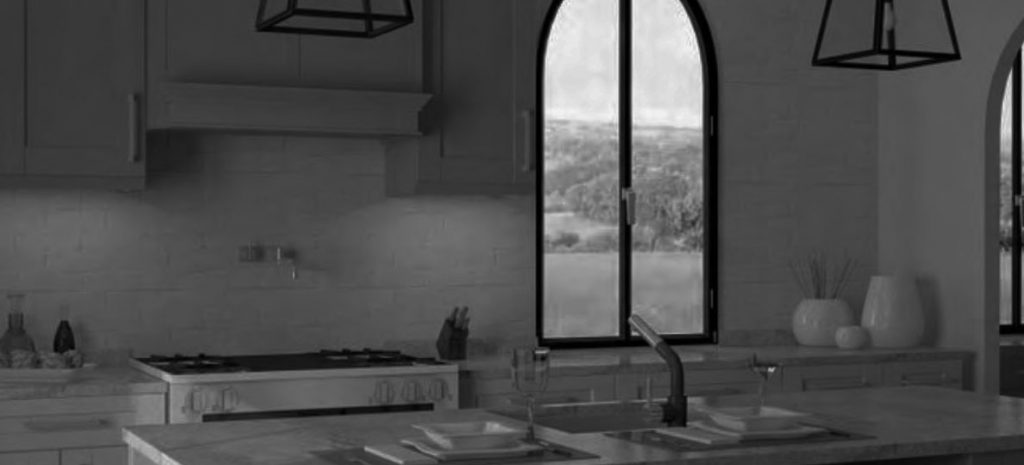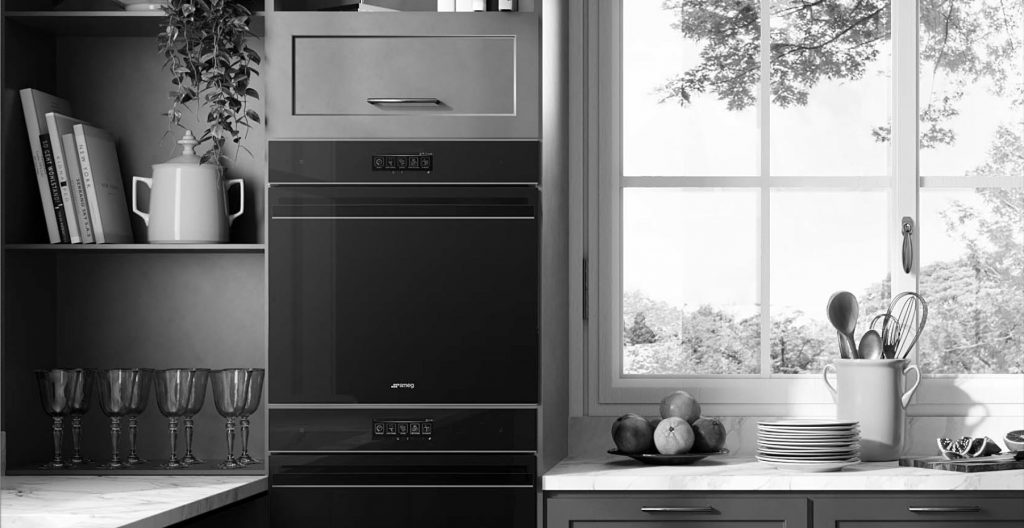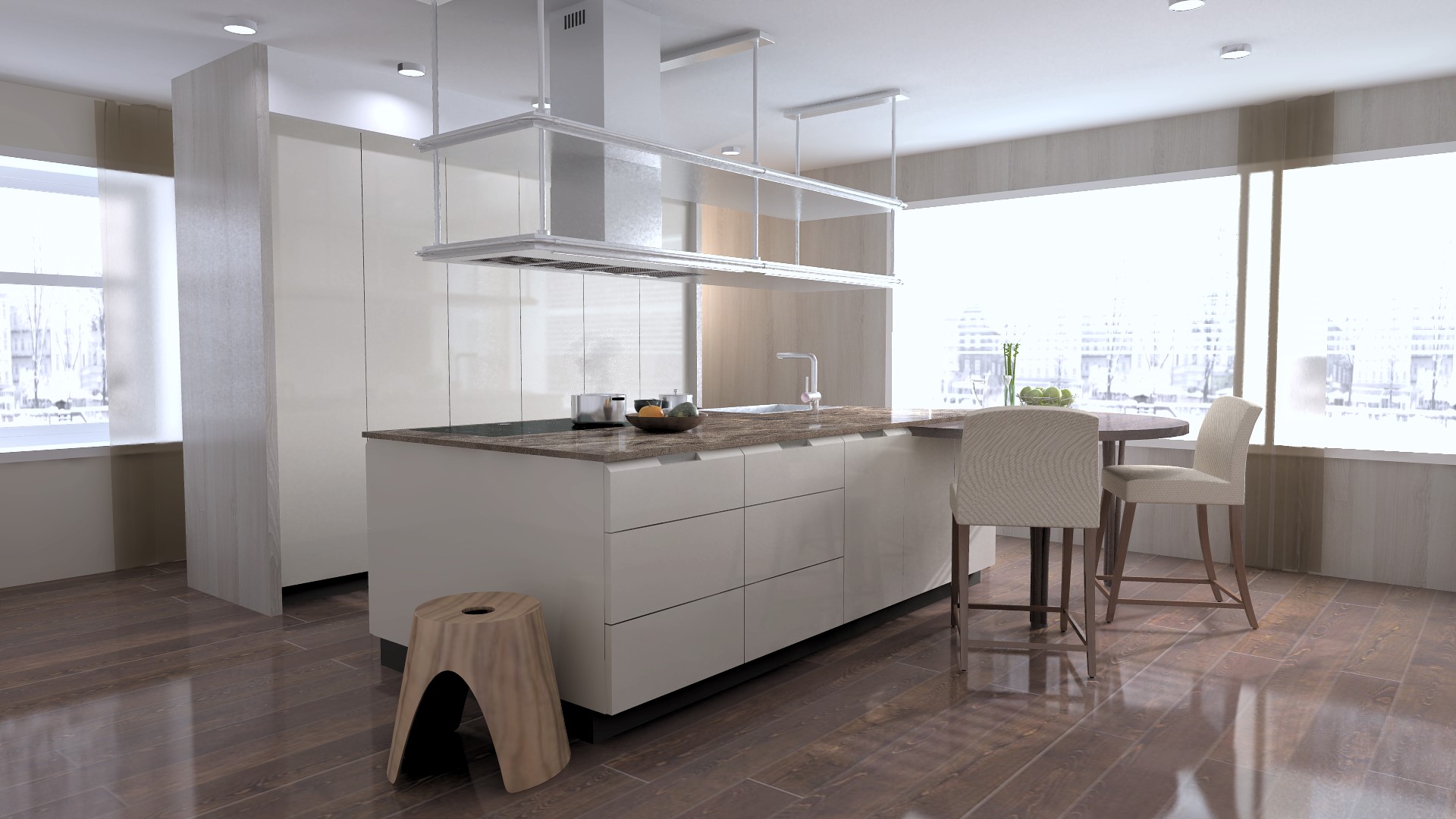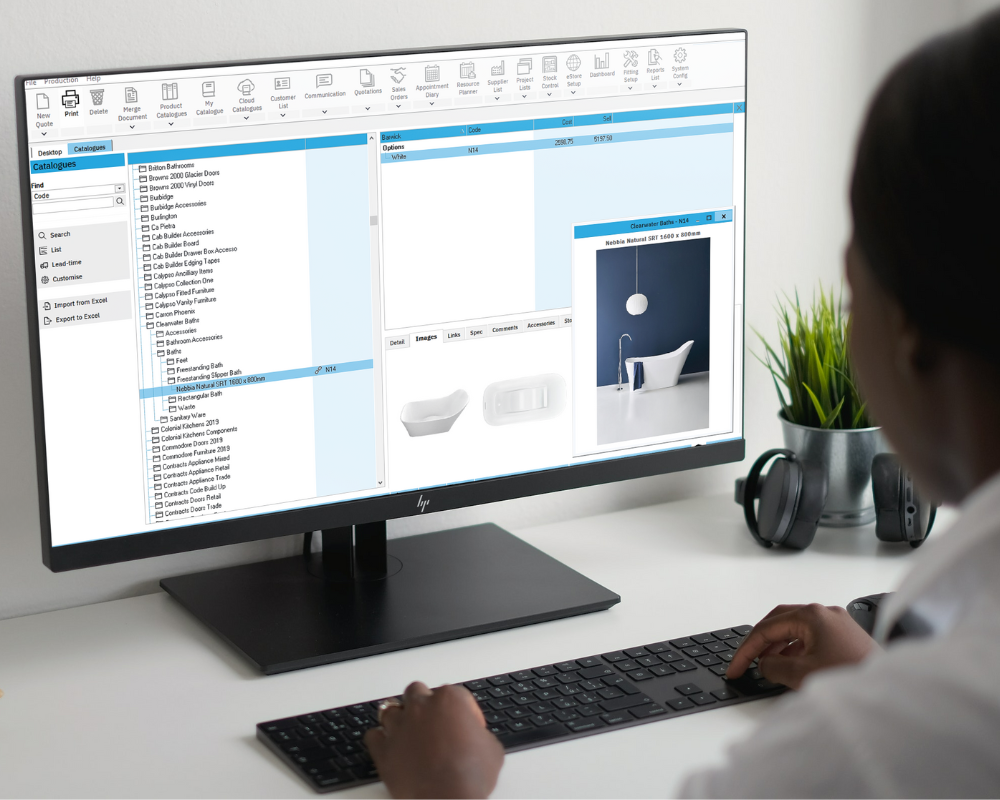What is The Kitchen Triangle Rule?
April 5, 2023
The kitchen triangle rule – also known as the kitchen work triangle rule – is a kitchen design concept that refers to the layout of the three main work areas in a kitchen: the sink, the hob, and the refrigerator. The idea behind is to use triangles to create a functional and efficient layout, one that makes it easy for the cook to move between these three areas.
A concept based on efficiency
The kitchen triangle is based on the idea that these three zones are the most frequently used areas in a kitchen. The sink is used for food preparation and cleaning, the hob is obviously used for cooking, and the fridge is used for storing food. By placing these three zones in a triangle formation, the cook can move easily and efficiently between them, minimising the amount of time and effort spent on food preparation.
What does the kitchen work triangle look like?
The exact implementation of the kitchen work triangle will vary depending on the shape of the kitchen – namely straight, U-shaped, parallel, L-shaped or G-shaped. The use of a kitchen island will also be a factor. Here are some examples of kitchen triangles for different kitchen shapes:
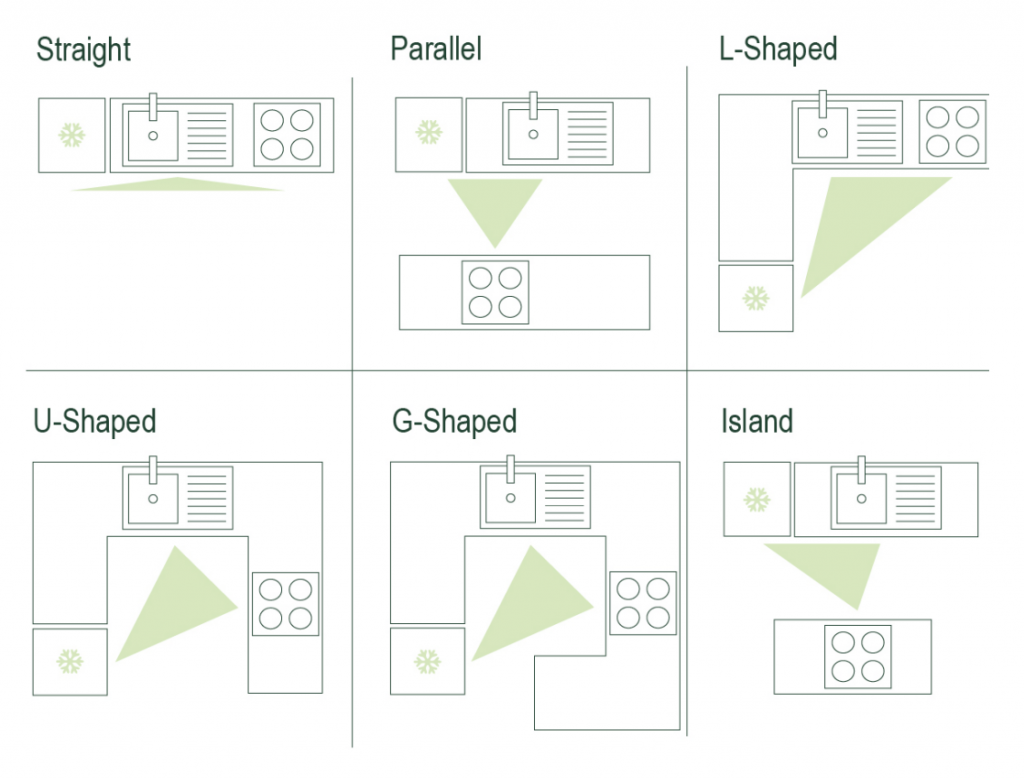
The kitchen triangle concept applied to different kitchen shapes: straight, parallel, L-shaped, U-shaped, G-shaped and island
How far apart should the kitchen triangle be? Recommended distances
Another important aspect of the kitchen triangle concept is the distance between the three zones. It is recommended to keep the distance between each zone to a minimum while still allowing enough room for the cook to move comfortably. This can be achieved by using smaller appliances or by positioning the zones in a way that maximises the available space.
Kitchen triangle guidelines and sizes
These kitchen triangle rules of thumb should be applied when designing a kitchen layout:
- The sum of the three sides of the work triangle should not exceed 26 feet
- Each side of the triangle should measure between 4 and 9 feet
- The work triangle should not cut through a kitchen island by more than 12 inches
- There should be no traffic that passes through the work triangle
- If there is only one sink, it should be placed across or between the food preparation area, cooktop or refrigerator
These are applicable to all shapes of kitchen space including L shaped layout, U shaped, one wall kitchen or galley kitchen.
More than one working triangle can be used
The kitchen triangle rule is often used as a guide when designing a new kitchen, but it is important to remember that every kitchen is different and may require a different layout.
For example, in a larger kitchen, it may be possible to have multiple triangles to best control traffic flow.. In a smaller kitchen, it may be necessary to combine two or more of the zones into one area.
Other kitchen design considerations
In addition to the kitchen triangle, it is also important to consider other aspects of kitchen layouts such as storage space, lighting, the presence of a kitchen island, available counter space and ergonomics.
For example, a layout that incorporates a kitchen island could cause users to constantly move around it to reach the sink, refrigerator and/or stove. As a result, the workflow is disrupted, and the kitchen becomes dysfunctional. The best way to avoid this scenario is to integrate the sink or the cooktop directly on the island.
By taking all of these factors into account, you can create a kitchen that is not only functional and efficient, but also comfortable and pleasant to work in.
The history of the kitchen working triangle
The kitchen work triangle concept was developed in the 1920s by Lillian Moller Gilbreth, a psychologist and industrial engineer, and was later taken further by the University of Illinois School of Architecture. Despite being designed to cut costs, the product has remained popular in the opinion of kitchen designers who consider the rule as vital to make kitchens efficient.
 How designers use the kitchen triangle rule
How designers use the kitchen triangle rule
Experienced kitchen designers should make use of the kitchen working triangle rule – which is sometimes referred to as the golden triangle – as a matter of course. They should also be able to demonstrate why their ideas are practical to the customer by the use of floor plans, 3D renders and/or 360 degree views – courtesy of their kitchen design software.
Kitchen triangles are applicable whether the kitchen space is a modern family kitchen or a simple, small kitchen.
Is the kitchen work triangle outdated? What has replaced the kitchen triangle?
Are triangle kitchens still used? It’s true that some designers are moving away from traditional triangles to create workspaces using kitchen work zones. Zonal design gives the possibility of more individuality – where the homeowner may have unique equipment or needs, or triangles are not quite the appropriate arrangement.
Generally, however, even in a zonal context the kitchen triangle works so it will persist as a foundational rule.
Summing up
In conclusion, the kitchen triangle is a design concept that helps to create functional and efficient kitchen layouts by paying special attention to the three main work zones in a kitchen: the sink (the prep zone), the hob (the cooking zone), and the fridge (food storage.)
While hopefully this is a useful guide, it is important to remember that every kitchen is different and may require a different layout. By considering all aspects of kitchen design, you can create a kitchen that is both functional and comfortable to work in.
Read more in our exclusive guide
Learn more about the kitchen triangle and other kitchen layout fundamentals in Compusoft’s exclusive guide, Kitchen Design Layout Ideas and Advice For Designers.

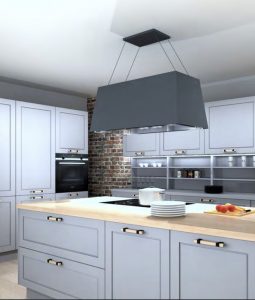 How designers use the kitchen triangle rule
How designers use the kitchen triangle rule
